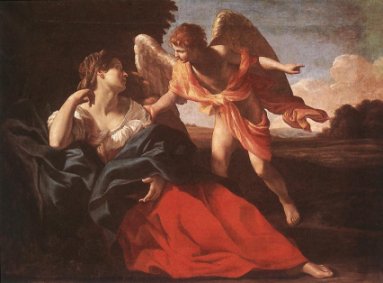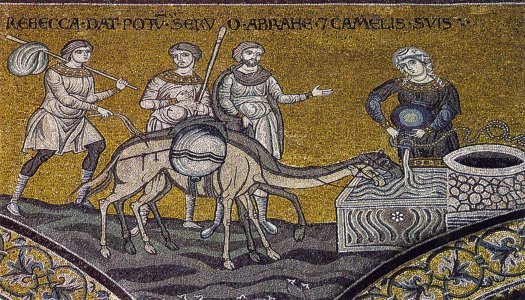|
The Virgin Birth is supposedly
predicted by the Prophet
Isaiah:
behold, a virgin shall conceive, and bear a son,
and shall call his name Immanuel.
(Isaiah Chapter 7)
Isaiah may have been rather surprised if someone had told him about this interpretation;
most (but not all) Biblical scholars agree that he was
talking about something else entirely. The word virgin is, to say the
least, controversial. The Hebrew word almah has been debated at
length, but the weight of modern scholarship is behind the
translation as 'young woman' rather than 'virgin'. Perhaps more
telling is that a virgin birth is a significant element in other stories of great
men: Romulus and Remus, and Buddha, for
example.
There are other echoes from the earliest parts of
the bible: an Annunciation to a prospective mother is a familiar biblical
type scene. Familiar examples are the Annunciation to Sarah, wife of Abraham, in
Genesis Chapter 21.
'And the Lord visited Sarah as he had said, and the Lord did unto Sarah as
he had spoken. For Sarah conceived, and bare Abraham a son in his old
age'. Not a virgin birth, but certainly a miraculous one - Sarah was
ninety years old.
Two further examples are the Annunciation to the wife of Manoah
(Judges 13) Shown below left in the version by Saraceni, and the Annunciation of the Angel to Hagar, mother of
Ishmael, in the wilderness, (Genesis 16) below right in the version by Giovanni
Lanfranco, now in the Louvre.
|
The second theme is that of the well as a meeting place, a location shown
mainly in early versions of the Annunciation. Interestingly, the Annunciation
to Hagar took place at a 'fountain of water'.
Old Testament Patriarchs such
as Abraham, Jacob and Isaac found wells very useful places to find wives. As
with Mary, they were busily engaged in drawing water when their future
spouses - or in the case of Isaac, a servant - popped the
question.
This mosaic of Rebekah at the well comes from the Cathedral at Monreale, Sicily.
|


